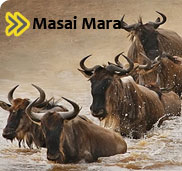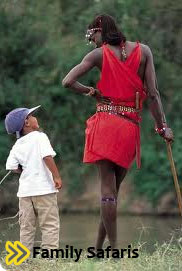 |
|
|||||||||||||
|
|
||||||||||||||
|
|
15 Days The Great Tanzania Northern Heritage Cultural SafariNairobi ,Amboseli N/P,Mt. Kilimanjaro-Rombo,Mkuu, Marangu & Kibosho, Pare mountains,Arusha, Serengeti N/P, Lake Victoria-Mwanza. Into the historical trails of those who sacrificed their lives for what is today’s Tanzania. These are Chief Magi Sina of Kibosho, Magi Mandara of Moshi, Mkwawa of the Hehe and Mirambo of Nyamwezi. Before colonial invasion, the indigenous people had built up formidable political systems and institutions. These were kingdoms, chief-doms or social orders such as the Maasai Age-set rule. The Nyamwezi people under chief Mirambo, the Hehe under chief Mkwawa and a series of kingdoms among the Chagga and the Haya people are some of such developments recorded. It is from some of these institutions that resistance to colonial domination, subjugation and exploitation emerged from late 19th century to the 20th century. Nairobi Masai Lodge (FB)Day1. Upon arrival at the airport you will be received by our representative who will transfer you to your hotel for dinner and overnight. Amboseli N/P Kibo Safari Camp (FB) Day2. Depart after early breakfast to Amboseli N/P at the foot of Mt. Kilimanjaro, Africa's Loitokitok-Rombo Olowauru Camp (FB)Day3. Depart early after breakfast driving across the corn farms and homesteads to Loitokitok town. Proceed down past various shoping centres with busy markets and people working in their farms to Rombo- Olowuaru Lion Camp. Stop over at Maili Tatu primary school a beneficiary of our tours. Check in at the camp for late afternoon driving and walking game drives and cultural immersions. Rombo group ranch borders Tsavo west N/P and boost a huge population of elephants. Loitokitok-Rombo Olowauru Camp (FB)Day4.Rombo is an important Maasai settlement and a community group ranch where significant and important Masai ceremonies, initiations and other cultural occasions are held. After breakfast walk/drive to the grand homested which has over 100 families living together. You will be briefed by thr resident guide on the significance of the homestead “Boma” and its activities. Continue with the excursions to sacred places. Return to the camp for lunch. Afternoon some game drives before returning to the homestead for an evening cultural songs and dance entertainment. Drive back to the camp for dinner and overnight. Tarakea-Kasirwa/Usseri Tarakea Guest HouseDay4 &5. Depart after breakfast to Tanzania crossing the border at Tarakea. Enter into Tanzania and drive to Kasirwa village to meet Mzee Karoli Lebai Silayo who will guide to cultural trails, history and places of the Rombo-Chagga. Visit the Magi home in Usseri village and other homesteads to see their way they live,their traditional houses and way of live. Get to know how the Chagga related with the Maasai. (Exchanging cows with male or female children) and other stories. Return to Tarakea Kasirwa the home of our host Mzee Karoli. Bon fire stories as you sip the traditional beer made from bananas “ Wari Wa Mbege” Dinner and overnight. Mkuu-Rombo- Marangu Capricorn Hotel (FB)Day6 . Depart to Mkuu-Rombo to visit the homestead of Magi Mariale’s descendants. Get to know how he related with other magi’s and the inter wars and coming of the colonialist. Proceed further to Marangu. Mamba and Marangu in the Kilimanjaro area have both natural and cultural heritage to offer the visitor. There are seven waterfalls in the vicinity, unique flora with tree, flower and fruit nurseries and fauna. Tour the slopes of Mount Kilimanjaro and ascend to beautiful viewpoints.Tours through Marangu can afford panoramic views of Mount Kilimanjaro. Visit the home and memorial of the late Yohana Lauwo, a Marangu native who accompanied Dr. Hans Meyer on the first recorded climb of Mount Kilimanjaro in 1889 and read the original log books of Lauwo.Mamba is a paradise for bird-watchers and nature lovers.Enjoy scenic waterfalls, trees, flower and fruit nurseries, pass historical sites including the Laka Holes - larger hiding caves used during the Chagga - Maasai wars. Southern Pare-Mghimbi Caves & Malameni Rock Tona Lodge camp (FB)Day7. Depart to Pare mountains which have been occupying the horizons from Marangu. Drive up the impassible mountains road to arrive before lunch at Tona Lodge. After lunch Visit the Mghimbi Caves, which in 1860 were used as hiding places during slave raids. Proceed to Malameni Rock where till 1930, thousands of children were sacrificed to the gods to appease the evil spirits. Southern Pare- Tona Lodge camp (FB)Day8. From Tona Lodge, walk through lush rainforests to view Malameni Rock and then proceed to Tona Moorland. Behind the moorland are ruins from the period of German missionary influence in Mbaga Hills.Go on to Ranzi Dam, where you can picnic besides a natural spring. After picnic lunch descend to visit Mbakweni village, home to traditional healers and breweries. Go on to Mlamba Natural Caves and Chabaru, a traditional village. 'The Pare women's uprising in northwest Shambaai, Tanzania, occurred in early January 1945 and continued with demonstrations into 1946, involving thousands of women. It began in Usangi, one of the chiefdoms, when the district commissioner arrived for discussions with the local chief. A crowd of five hundred women appeared, demanding an explanation of mbiru, a system of graduated taxation. When the commissioner tried to leave without addressing the women, they became enraged and mobbed the assembled officials. Two days later, women surrounded the chief's house singing songs, and ultimately stoned officials and battled police.' Moshi-Kibosho AMEG Lodge/ Camp (FB)Day 9. After breakfast drive to Kibosho village to visit the Mangi Sina chief dom. You will be received by village elders who will take you back into the history of the great Chiefs of the Chagga communities. Despite their illiteracy they made decisions and signed various treaties with the missionereies, colonial Governments and traders on behalf of their people. The Mangi are great chiefs that govern largely clan-based states. The great Mangis controlled chaga affairs even during the oppressive and depressing colonial times, even though some ethnic groups did not have such control. Arusha -Ilmorijo Esserian Maasai camp (FB) Day10. Depart early after breakfast to visit the Esserian Maasai Camp at Ilmorijo is a fairly well equipped campsite with panorama on the Rift Valley, Mount Keremasi, Oldonyo Lengai and Lake Natron. From here you will descend to the wonderful Sominem dam site, a Maasai boma and ‘Orpul’, a traditional Maasai meat camp. The tour starts at the Emairete dam from where you walk passing the Maasai church, the Primary School, Kindergarten project up to Naramatu, where you can get herbal tea. Going further up the mountain to the ex-Eye Hospital from where you can admire the wonderful Monduli Juu Panorama. Savor lunch in a Maasai Along the way the guide will explain about the different medicinal herbs used by the Maasai and you will visit a traditional medicinal herbs doctor. Serengeti N/P Dik Dik Camp (FB)Day11. Depart to Serengeti after breakfast. The Serengeti hosts the largest concentration of wildlife in the world, and is home to one of the great wonders in the world, the Great Migration. Over a million wildebeest and some 600,000 zebra move through the eco-system, with lion, leopard, cheetah, hyena, wild dog and crocodile making sure only the strongest survive. Here are the famous Serengeti plains - endless grasslands where lion and cheetah find perfect hunting grounds. Stop over at Olduvai Gorge an archaeological site located in the eastern Serengeti Plains, which is in northern Tanzania. The gorge is a very steep sided ravine roughly 30 miles long and 295 ft. deep. Exposed deposits show rich fossil fauna, many hominid remains and items belonging to the one of the oldest stone tool technologies, called Olduwan. The time span of the objects recovered date from 2,100,000 to 15,000 years ago. A stay in tented Camp is not about luxury though. It's about something more than that. Being in the middle of this wonderful spectacle, with wild animals roaming around camp at night, is a dream come true to even the most experienced of travelers. Lake Victoria Speke Bay Lodge camp (FB)Day12. After breakfast depart to the shores of lake Victoria to visit the sukuma people and related other semi-tribes. Speke Bay is part of Speke Gulf, named after the famous explorer John Hanning Speke, who, in 1858, discovered Lake Victoria to be the source of the Nile. The Lodge looks like a small village, stretched out along the shores of the lake painted white and thatched with a grass roof in the traditional style of the local tribe, the Sukuma. You will be picked up in a colourful canoe at the Lodge's beach by fishermen and brought to Mwaburugu, their village. You may explore the village on foot before they bring you back, singing their rhythmic melodies while they row. Your guide tells you about the different methods of fishing, the way of life in the village and the birds you see on the way. Lake Victoria-Mwanza Pamba Hotel (FB)Day13 & 14. Depart after breakfast to Mwanza to visit the the Bujora Church founded in 1952 as a site where Sukuma traditions were used to teach the Catholic liturgy. Bujora remains an important center for adaptation. Adaptation is the teaching of the Catholic liturgy through indigenous cultural terms. Church services at Bujora include Sukuma music and dance. In addition, the Bujora Church is the first in Usukuma to be built in the shape of a traditional round house. Bujora has also maintained practices of adaptation during religious festivals. In several Catholic parishes in Usukuma, priests attracted the unconverted public during the Feast of Corpus Christi, a Catholic ceremony to celebrate the Eucharist. In the ceremony, flowers are thrown at the "body" of Christ at intervals during a long processional walk. Today, the Feast of Corpus Christi ritual is called Bulabo in Kisukuma, which means "flowers." The ceremony coincides with the beginning of the Sukuma dance season, which takes place from June to August after the harvest of local crops. This mix of Christian religion and traditional ceremony attracted many Sukuma individuals to Catholicism. Lake Victoria-Mwanza DepartureDay15. You will be transferred to the airport for a flight to Nairobi/ Arusha for departure. |
|
||||||||||||
|
|
|
|
|
 |
|
|||||||||
 |
|
|||||||||||||
|
|
|
|||||||||||||
|
|
|
|||||||||||||
|
|
|
|||||||||||||
|
|
|
|||||||||||||
|
|
|
|||||||||||||
|
|
|
|||||||||||||
|
|
|
|||||||||||||
 |
|
|||||||||||||
|
|
|
|||||||||||||
|
|
|
|||||||||||||
|
|
||||||||||||||
|
|
|
|||||||||||||